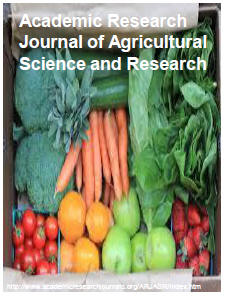| ARJASR |
Academic Research Journal of
Agricultural Science and Research |
||||||||||||||||||||||
|
Academic Research Journal of Agricultural Science and Research Vol. 3(8), pp. 238-244. August, 2015. ISSN: 2360-7874 DOI: 10.14662/ARJASR2015.054
Full Length Research Agricultural inputs obtained by CO2 chemical sequestration in piggery wastewaters
Marieta Ghimpusan1*, Aurelia Cristina Nechifor1, Gheorghe Nechifor1, Ștefan-Ovidiu Dima1,2, Piero Passeri3
1 University Politehnica from Bucharest, Faculty of Applied Chemistry and Materials’ Science, 1-7 Gheorghe POLIZU, 011061 Bucharest, Romania (* maghimpusan@gmail.com). Corresponding author: Marieta Ghimpusan 2 National Research and Development Institute for Chemistry and Petrochemistry ICECHIM, 202 Splaiul Independentei, 060021 Bucharest, Romania. 3 G.O.S.T. Srl, 31 Via Romana, 06081 Assisi (Perugia), Italy
Accepted 13 August 2015
Carbon dioxide
sequestration in chemicals with applications in agriculture is one of
the active research fields at global scale. The aim of this paper was to
study the CO2 sequestration in piggery wastewater. The obtained products
are ammonium carbonate, ammonium bicarbonate, and carbamate, compounds
with various agricultural and industrial applications. It was
investigated the biological treatment of piggery wastewater for organic
carbon and nitrogen removal in a combined anaerobic–aerobic
sequestration batch reactor (SBR) system. The wastewater treatment
plants are a source of greenhouse gases (GHG) emissions such as CO2 or
nitrous oxide (N2O). SBR system plant has been proposed as a technology
to convert CO2 and wastewaters into valuable products (hydrogen,
methane, organic compounds) by intake of generated gas in the system as
a source of reducing power. The laboratory investigation was performed
to assess the feasibility of CO2 absorption and the quantities of
Nitrogen-containing compounds decreasing. It was found that by applying
this technique, the quantities of organic carbon and nitrogen-containing
compounds are significantly reduced. Besides the CO2 capture and,
consequently, the decreasing of GHG amount, the obtained products can
find large scale application in agriculture for plant growth, in
industry, and even in tissue engineering. How to cite this article: Ghimpusan M, Nechifor AC, Nechifor G, Dima S-O, Passeri P (2015). Agricultural inputs obtained by CO2 chemical sequestration in piggery wastewaters. Acad. Res. J. Agri. Sci. Res. 3(8): 238-244.
|
|
|||||||||||||||||||||
